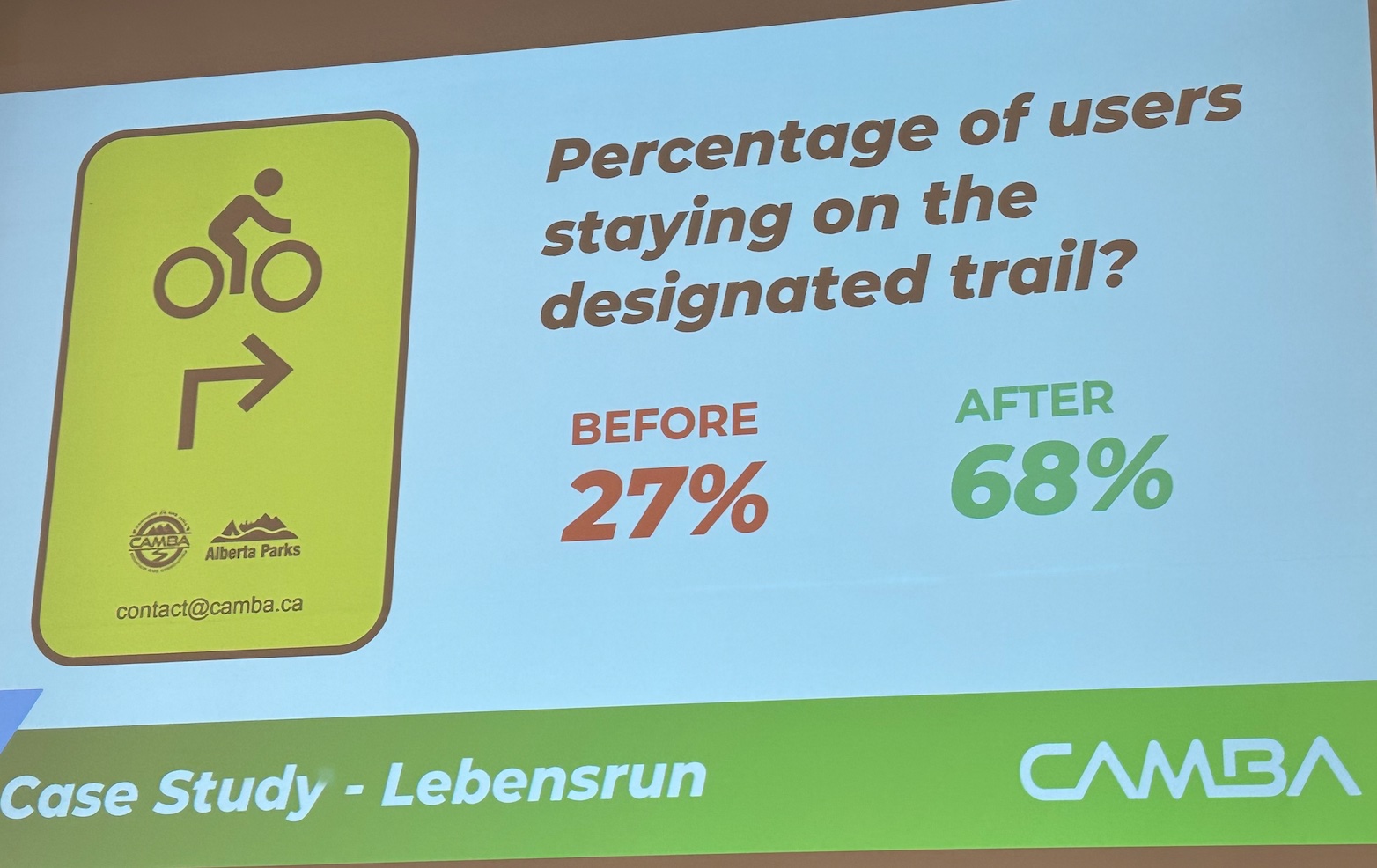AMPPE recently attended a presentation and discussion on the hot-button topic of wildlife coexistence with recreation, particularly mountain biking, in the Bow Valley. We were keen to participate in this discussion that featured speakers from Yellowstone to Yukon (Y2Y), a wildlife biologist and the Canmore and Area Mountain Bike Association (CAMBA), as the Y2Y has been calling for recreational trails to be reduced by 50 per cent in the Canmore area.
The event, part of the Biosphere Institute of the Bow Valley’s Earth Talks series, featured presentations by representatives from the three organizations, followed by a question and answer session.
First, the audience heard from Josh Welsh from the Y2Y, who presented findings from a Y2Y-commissioned report on grizzly bear movement and conflict risk in the Bow Valley. The paper recommends limits to urban expansion, deactivating informal recreational trails, and reducing nature-based recreation by 50%. Welsh emphasized the risks posed by unsanctioned recreational trails, especially mountain bike trails, to grizzlies. He highlighted the need to consider recreation as a consumptive practice and recognize nature as a stakeholder. Welsh suggested visitor use management, trail alliances, and coexistence programs as potential solutions, citing successful campaigns in other regions like Moab, Fernie, and the Grand Tetons in Wyoming.
Next up was Dr Peter Thompson, a wildlife biologist from the University of Alberta, researching animal movement in the Bow Valley. He aims to develop spatial models that predict animal distribution and behaviour by analyzing GPS and trail collar data. Thompson’s study, which is just getting underway, will focus on understanding how human trail use may impact grizzlies and wolves. Through his work, he seeks to identify the specific forms of human activity and recreation that pose the greatest threats to these animals.
Finally, Justin Deoliveira of CAMBA had an opportunity to speak. Deoliveira acknowledged the mountain bike community’s role in recreating in grizzly habitat, saying, “The onus is on us to take this seriously.” Deoliveira noted (along with the other speakers) that unsanctioned trails are a cause for concern; however, he presented several data-based recommendations he says would mitigate the risk of grizzly encounters.
First, he said, reducing grizzly displacement begins with having a responsibly built, well-connected trail system that meets recreational needs. Responsible mountain bike use should include educating users on how to recreate responsibly, enforcing proper trail use and measuring changes in human behaviour with reliable data.
Deoliveira pointed to the immediate changes in user behaviour that could be gained simply by improving wayfinding and signage. After showing some images of existing trail signage, he presented a picture of a redesigned sign CAMBA placed on a local trail called Leben’s Run. The data showed that only 27% of users stayed on the designated path before the new sign versus 68% of users who stayed on trail with the new sign.
The three presentations spurred a flurry of questions from the audience, including questions about the parameters of the research, questions over who should be in charge of making decisions about recreational trails, and about the impacts of other types of recreation, such as dog walking.
While the discussion was animated, in the end, all agreed that it would take collaboration and effort from all groups to reduce grizzly displacement and mitigate the chances of wildlife encounters.
Alberta Parks will begin preliminary engagement on a Canmore-area trails study this fall. Stay tuned as AMPPE will provide details on how you can participate when the time comes.


